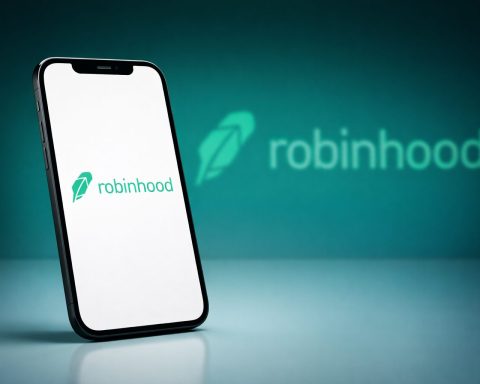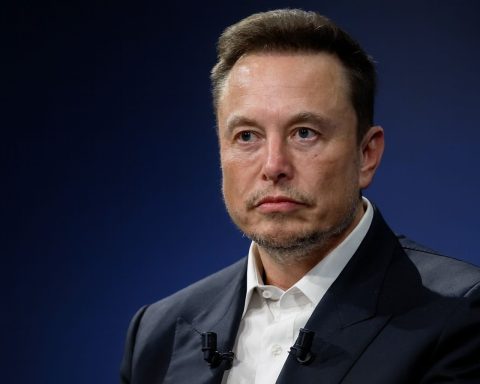- Moldova ranks 3rd in the world for gigabit fiber coverage, with about 90% of the population having access to gigabit-speed plans.
- The average fixed broadband download speed is about 120 Mbps, placing Moldova around 40th globally for fixed speeds.
- Moldtelecom and StarNet together account for roughly 80–90% of fixed broadband subscribers, underpinning nationwide access.
- As of 2024, the average monthly fixed broadband price was $9.19 (about 162 MDL), making Moldova 3rd in Europe and 9th worldwide for affordability.
- By early 2025 there were about 3.86 million active mobile connections, equal to 128% of the population, with over 95% of connections 3G/4G/5G-enabled and 4G coverage exceeding 98% of the population.
- 5G arrived in 2024, with Moldcell launching the first 5G pilot in April 2024 and Orange following, and by 2025 coverage was limited to central Chişinău and nearby areas, estimated at 20–25% of the population.
- Starlink entered Moldova in August 2022, the government deployed 30 Starlink terminals for refugee centers and border posts in 2022, and Starlink now provides 100+ Mbps speeds, with hardware and subscription costs around $50–$100 per month.
- Approximately 2.4 million Moldovan internet users in early 2025 represent about 80% of the population, with 2.42 million users and 80% penetration; 71% of households had internet access by 2023.
- The 2025 Law on Electronic Communications, adopted April 10, 2025, promises EU-like connectivity, rights to quality networks, roaming at home with EU partners, tariff caps with EU, and strengthened ANRCETI independence.
- The Digital Transformation Strategy 2023–2030 targets a minimum nationwide broadband speed of 100 Mbps and at least 25% 5G coverage in the near term, with nationwide 5G by 2030 as Moldova aligns with the EU Digital Decade.
Moldova is experiencing an internet connectivity boom that few might expect from one of Europe’s smaller and poorer nations. In 2025, this country boasts some of the fastest and most affordable internet access in the world [1] [2]. High-speed broadband networks blanket the cities and even reach deep into rural areas, while new technologies like 5G mobile and satellite internet are expanding connectivity where cables can’t. Around 80% of Moldovans are now online [3], enjoying widespread fiber-optic coverage and mobile broadband services that rival those in more developed markets. This report provides a comprehensive look at Moldova’s internet access landscape in 2025 – from fixed broadband and mobile internet to satellite services – including key providers, speeds, pricing, coverage gaps, government initiatives, and future outlook.
Fixed Broadband: High Speeds and Wide Coverage
Moldova’s fixed broadband infrastructure is remarkably robust for its size. The country ranks 3rd in the world for gigabit fiber coverage, with around 90% of the population having access to gigabit-speed internet plans [4]. This is backed by extensive fiber-to-the-home networks and cable systems that deliver ultra-fast connections. In fact, average fixed broadband download speeds reach about 120 Mbps, placing Moldova around 40th globally for fixed internet speed – above the global average [5]. Such high capacity is not limited to a lucky few; gigabit-capable fiber networks cover most cities and towns, and many consumers routinely enjoy 100 Mbps or higher service tiers. As a result, users experience excellent streaming, gaming, and teleworking performance across the country.
Key broadband providers dominate this fixed-line market. State-owned Moldtelecom (the incumbent telecom operator) and private ISP StarNet together serve roughly 80–90% of fixed broadband subscribers [6]. Moldtelecom, through its national fiber network, offers services virtually throughout the country, while StarNet covers most cities and regional centers [7]. Other ISPs, including the local operations of Orange and Moldcell (better known as mobile operators), as well as smaller regional players like Arax or local cable companies, make up the rest of the market [8] [9]. Despite the variety of providers, Moldtelecom’s nationwide infrastructure often underpins last-mile connections for many competitors (who lease capacity), reflecting the company’s legacy as the national backbone. Notably, even with this incumbency, Moldova’s broadband market is liberalized and competitive – there are dozens of licensed ISPs, ensuring that consumers in most areas have a choice of suppliers, prices, and packages rather than a monopoly [10] [11].
Coverage in urban vs. rural areas: Urban centers like Chișinău and Bălți enjoy almost universal fixed broadband coverage, predominantly via fiber. In cities, residents commonly subscribe to affordable fiber plans of 100 Mbps, 300 Mbps or even 1 Gbps. Rural areas, while historically underserved, have seen dramatic improvements in connectivity as well. Thanks to Moldtelecom’s efforts and smaller ISPs extending fiber and wireless links, broadband now reaches many villages. By 2023, an estimated 86% of Moldovan households had a fixed broadband subscription, a rate higher than the EU average for household broadband uptake [12]. This signals that rural connectivity has caught up significantly – although some remote communities still rely on older DSL lines or mobile networks where laying fiber is challenging. The government’s data shows household internet access in Moldova climbed from only 35% in 2013 to around 71% in 2023 [13], indicating huge strides in the past decade, largely by bringing rural homes online. Nevertheless, a digital divide persists in the quality of access: urban subscribers often get fiber gigabit options, whereas rural users may have fewer high-speed choices or depend on 4G/5G wireless as an alternative. Bridging this urban–rural gap remains a focus of ongoing infrastructure projects.
Pricing trends for fixed internet: Moldova’s fixed broadband is not just fast – it’s famously cheap. The country ranks among the most affordable internet markets globally. As of 2024, Moldovan users paid on average only $9.19 (about 162 MDL) per month for high-speed home internet, making Moldova 3rd in Europe and 9th worldwide for broadband affordability [14]. Entry-level plans can cost even less, and price-per-megabit has steadily declined as fiber capacity expanded. According to the ITU, the monthly price of a standard fixed broadband package in Moldova fell to roughly 1.2% of gross national income per capita by 2024, well below the 2% affordability target set by the UN [15]. This means broadband is easily within reach for the average household. Competitive pressures and regulatory oversight have kept prices low – Moldtelecom has cut tariffs over the years to align with competition and EU norms [16]. Going forward, the new Electronic Communications Law explicitly mandates monitoring of retail internet prices relative to incomes, with provisions to intervene if services become unaffordable for disadvantaged groups [17]. For now, however, Moldova’s combination of high speed and low cost in fixed internet is a standout success.
Mobile Internet: Expanding 4G and 5G Horizons
Mobile broadband is equally vital to Moldova’s internet landscape, given that a majority of people access the web via smartphones. The country has three main mobile network operators – Orange Moldova, Moldcell, and Moldtelecom’s mobile division (formerly Unite) [18]. Together they have achieved near-universal coverage with 3G and 4G networks, even in remote regions. As of early 2025, there were about 3.86 million active cellular connections in Moldova, which equates to 128% of the population (many users maintain dual SIMs or separate work and personal phones) [19]. Importantly, over 95% of these mobile connections are 3G/4G/5G-enabled, indicating that virtually all subscribers have access to mobile broadband-capable service [20]. In practice, 4G LTE covers over 98% of the population, delivering fast internet on the go across most of the country. Even rural villages benefit from 4G coverage, thanks to past network expansion obligations and spectrum license requirements on the operators.
Mobile internet speeds in Moldova are respectable and improving. On Speedtest’s Global Index, Moldova placed around 57th in the world for mobile data speed in late 2023, with an average download speed of about 50–51 Mbps on mobile connections [21]. This is slightly below the global mobile average (~56 Mbps), but more than sufficient for streaming HD video, video calls, and other common uses. Urban areas see higher speeds (often 60–100 Mbps on 4G in strong coverage zones), while some rural or congested spots may see lower throughput. The good news is that 5G technology arrived in 2024, promising a leap in wireless speeds. Moldova’s operators began rolling out 5G networks in Chişinău and other major cities in 2024 [22] [23]. Moldcell launched the country’s first 5G pilot in April 2024, and Orange followed with 5G tests soon after [24] [25]. By 2025, both companies had enabled limited 5G service in central Chişinău and were expanding coverage to more neighborhoods and regional cities. While 5G coverage is currently small (a few pockets covering an estimated 20–25% of the population), it is expected to grow rapidly in the next few years as operators invest in new spectrum and infrastructure. Early 5G users in Moldova can experience download speeds well over 200 Mbps on supporting devices, and the technology is poised to support advanced applications (like IoT, smart city systems, and high-definition mobile streaming) as it scales.
Coverage and usage: For now, 4G LTE remains the workhorse of mobile internet, and its coverage is extensive across both urban and rural Moldova. Even many low-income or remote households rely on 4G home routers or phone tethering for their primary internet if fixed lines are not available. Mobile internet penetration is very high – effectively all adult mobile users have internet-capable subscriptions, and mobile broadband usage per subscriber is rising each year. According to DataReportal, the number of internet users via any device reached 2.42 million (80% penetration) in 2025 [26], and much of that usage is on mobile networks given the ubiquity of smartphones. In rural regions, 4G-based home internet solutions are a common stopgap where fiber hasn’t yet reached; operators offer generous data packages at low cost, making mobile an attractive alternative. Pricing for mobile data is also extremely affordable in Moldova. Telecom data baskets rank among the cheapest in Europe – a typical mobile broadband plan (with a few GB of data) costs well under 1% of monthly income on average [27]. For example, unlimited or large data plans from Moldcell or Orange can be found for the equivalent of $5–$7 per month, vastly cheaper than in many neighboring countries. This low cost has driven high adoption: consumers freely use mobile internet for social media, messaging, and media consumption without the worry of excessive bills.
Moving ahead, Moldovan mobile operators are preparing for wider 5G rollout and network upgrades. In late 2024, the regulator ANRCETI auctioned 2100 MHz spectrum and other bands for 5G, which all three operators secured to support next-generation services [28]. The new Electronic Communications Law of 2025 also aligns Moldova with the EU roaming regime, meaning Moldovan users can look forward to “roam like at home” arrangements when traveling in the EU in the near future [29]. This integration will further incentivize network improvements. Overall, Moldova’s mobile internet environment in 2025 is characterized by broad coverage, competitive offerings, and a technological leap toward 5G – ensuring that even those without fiber can get online quickly and cheaply via their phones.
Satellite Internet: Reaching Remote Areas via Starlink
For the most hard-to-reach corners of Moldova, satellite internet has emerged as a game changer. In August 2022, SpaceX’s Starlink service went live in Moldova, making the country one of the early adopters of low-Earth orbit satellite broadband in the region [30]. The government fast-tracked permissions for Starlink particularly in response to the Ukraine crisis, even deploying an initial 30 Starlink terminals to refugee centers and border posts in 2022 as an emergency measure [31] [32]. Since then, Starlink’s availability has expanded commercially across Moldova. This satellite service is providing high-speed internet (100+ Mbps) via a small dish, anywhere in the country with a clear sky view – a boon for locations where neither fiber nor reliable mobile coverage exists.
The role and impact of Starlink in Moldova has been significant for rural connectivity. Remote communities, schools, and businesses in isolated villages (especially in hilly or sparsely populated areas) have used Starlink to get online where previously they had little or no options. Local tech enthusiasts note that many people in such areas started adopting Starlink because “it’s sometimes the only solution” and can even be cheaper than certain terrestrial alternatives in those locales [33]. Starlink’s standard kit and monthly fee, while not trivial, allow sharing connections across multiple households or community centers, making it cost-effective. Moreover, Starlink is seen as a strategic backup for Moldova’s internet resiliency. With regional tensions and the risk of traditional infrastructure outages, having satellite internet diversification is valuable [34]. For example, if fiber lines to a region are cut (Moldova’s backbone largely runs through neighboring countries), Starlink can keep critical services online.
Besides Starlink, other satellite providers are also on the radar. Traditional geostationary satellite internet (from providers like HughesNet or Eutelsat) has been available on a limited basis in Moldova, but these older services were slow and costly, thus never widespread. However, new low-Earth-orbit constellations promise to change that. OneWeb, a European-backed satellite internet network, is expected to cover Moldova as it becomes fully operational, potentially giving consumers more choices in satellite broadband. For now, Starlink dominates the satellite scene due to its early start and high performance. The government has generally welcomed these services, seeing them as complementary to national infrastructure goals. There are no major regulatory hurdles – in fact, the 2025 telecom law explicitly encourages technologies that extend connectivity to underserved areas. The only caveat is cost: Starlink hardware and subscription (roughly $50–$100 per month) is still relatively expensive for average Moldovan incomes. Thus, it’s primarily used by businesses, community projects, or higher-income rural users, rather than the general population. Still, its presence ensures that by 2025 no part of Moldova needs to remain offline – even a farmhouse in the mountains can now get a fast internet link via satellite if needed.
Internet Penetration and Usage
Internet usage in Moldova has grown by leaps and bounds, reaching new highs in 2025. As noted, approximately 80% of the population uses the internet regularly [35]. This is a dramatic rise from a decade ago (when barely half the population was online) and reflects successful expansion of both fixed and mobile connectivity. In absolute numbers, about 2.4 million people in Moldova are internet users as of early 2025 [36]. Most users access the internet via multiple channels – at home on Wi-Fi, on smartphones via mobile data, at work or school on wired connections, etc. The penetration rate of 80% is on par with global averages, though it still trails the highest rates seen in Western Europe (90%+). Moldova’s internet user base would likely be even higher if not for demographic factors: a significant share of the remaining offline population are elderly residents or those in remote rural areas who either lack digital skills or see less need for internet in daily life. For instance, surveys indicate that only about one-third of people over 60 use the internet, compared to over 80% of those under 60 [37]. Addressing this generational gap is part of the country’s digital inclusion strategy.
In terms of internet penetration by household, different data sources provide slightly varying figures, but all show a strong upward trend. By 2023, roughly 71% of households had some form of internet access at home (via fixed or mobile networks), up from just 35% ten years prior [38]. If considering broader “broadband take-up” (including mobile internet usage by any household member), some reports put the figure as high as 93% of households [39], which suggests that virtually all families have at least one member connecting to the web. The core takeaway is that internet access is now the norm in Moldova, not the exception. Urban households almost universally have home internet, and rural households are catching up quickly thanks to mobile solutions and rural fiber rollout.
The digital infrastructure development underpinning this penetration is notable. Moldova has invested in a strong national fiber-optic backbone connecting its towns and providing high-capacity links to the global internet (primarily through Romania). The country’s overall infrastructure is well-developed enough that most users, even outside cities, can get good-quality service [40]. There are multiple Internet Exchange Points (IXPs) domestically, and Moldova benefits from being adjacent to the EU’s networks for reliable international bandwidth. The government, with support from international partners, has continually upgraded the digital infrastructure: for example, backbone network modernizations and fiber links have been extended to underserved districts in recent years as part of development programs.
However, challenges remain in achieving 100% penetration. The remaining offline pockets often correlate with poverty, education, and age. Some low-income families still cannot afford devices or any monthly fee (despite low prices), and digital literacy programs are needed for those who have never been online. The government’s Digital Transformation Strategy 2023–2030 recognizes these challenges, emphasizing inclusive access. It calls for initiatives like a national broadband mapping system to identify coverage gaps and target investments, and programs to boost digital skills among rural and elderly populations [41] [42]. Notably, the strategy sets ambitious objectives, such as ensuring a minimum broadband speed of 100 Mbps across the country and pushing 5G coverage to at least 25% of the population in the near term [43]. As these plans materialize, Moldova’s penetration rate is expected to continue climbing toward European Union levels (the EU average household internet access is ~93%). The trajectory suggests that by the late 2020s, internet use in Moldova could become almost universal, with targeted efforts making sure no demographic group is left offline.
Key Providers and Market Landscape
Moldova’s internet ecosystem is shaped by a mix of state-owned and private providers, with healthy competition in most segments. On the fixed broadband side, Moldtelecom stands out as the former monopoly that still leads the market. It is the only ISP with truly nationwide coverage, leveraging an extensive fiber and DSL network inherited from the telephone system [44]. Moldtelecom offers everything from ADSL in remote villages to GPON fiber in cities, and it also runs a mobile network (Unite) and IPTV services. Despite four failed privatization attempts, Moldtelecom remains state-controlled [45], and while it has faced criticism in the past for slow reforms, it has modernized significantly and lowered prices to stay competitive [46].
The biggest private competitor is StarNet, a homegrown Moldovan company that built its own fiber networks in urban areas. StarNet has around 20–25% of the fixed broadband market and is popular for its high-speed packages and innovation (it was among the first to introduce gigabit internet in Moldova). Another notable player is Orange Moldova, part of the global Orange group. Traditionally the top mobile operator, Orange entered the fixed broadband market by acquiring cable operator Sun Communications and now offers convergent packages (fiber internet, mobile, and TV). Orange holds a smaller but growing share (perhaps ~5–10% of fixed subscribers in 2025) [47]. Moldcell, the second-largest mobile operator (formerly owned by Telia Company, now by CG Cell), has also launched fixed-wireless and fiber offerings in select areas, leveraging its mobile infrastructure to provide home internet. In total, over 90 licensed ISPs operate in Moldova [48], though many are very local. For example, some small towns have local providers or wireless ISPs serving a niche customer base. This plurality keeps the market dynamic – users can often choose from 2 or 3 ISPs even in smaller cities.
In the mobile sector, the competitive landscape has long been a three-way race: Orange, Moldcell, and Moldtelecom (via Unite). Orange is the market leader in mobile, known for wide coverage and network quality, while Moldcell is a strong second with a reputation for affordable plans and was the first to launch 5G tests. Moldtelecom’s mobile arm is the smallest, but it leverages bundling (offering discounts to Moldtelecom fixed-line customers) to stay relevant. All three offer 2G/3G/4G services, and now trial 5G, with largely overlapping coverage maps. Importantly, none of these telecom operators owns major media/content businesses [49], which is somewhat unique compared to other countries where telecom-media conglomerates exist. This has meant their focus remains on connectivity services rather than content, and regulatory oversight is mainly about telecom competition and not media dominance.
Finally, in the satellite and emerging tech space, SpaceX’s Starlink is effectively a new entrant providing internet from outside the traditional market structure. There are also a handful of satellite telecom resellers and tech companies facilitating Starlink or similar services, but they are not mainstream ISPs in the traditional sense. Their presence, however, adds a layer to the market: for the first time, a customer in Moldova can bypass local telecom infrastructure entirely and subscribe to a global satellite service for internet. This has kept ISPs on their toes, indirectly encouraging them to serve remote customers better (to avoid losing them to Starlink).
Overall, Moldova’s internet service market in 2025 can be described as competitive and consumer-friendly. No single company has a stranglehold on all services – the state incumbent is strong in fixed, but faces competition; the mobile market has three viable players; and new technologies are providing alternatives. The regulatory framework (discussed next) further ensures that users have the right to choose providers and switch easily, fostering an environment where service quality and pricing are key differentiators.
Policy and Regulatory Frameworks
Moldova’s government and telecom regulator have been proactive in aligning the country’s policies with international best practices, especially as Moldova moves toward closer integration with the European Union. The National Regulatory Agency for Electronic Communications and Information Technology (ANRCETI) is the body overseeing telecom and internet services. As of 2025, a major regulatory milestone has been the passage of a new Law on Electronic Communications, adopted by Parliament on April 10, 2025 [50] [51]. This law represents a comprehensive update of telecom rules, essentially transposing the EU’s European Electronic Communications Code into Moldovan legislation.
Under the new law, Moldovan consumers are promised “EU-like connectivity” and protections. The law guarantees the right to access quality fixed, mobile, and high-capacity networks with a choice of provider, transparent pricing, and service quality standards [52] [53]. It places strong emphasis on consumer rights: for instance, ISPs must clearly inform customers of expected speeds (minimum and maximum) and provide remedies if actual performance deviates significantly [54]. If an internet service consistently underperforms (e.g. much slower than advertised), consumers can file complaints and even claim compensation, and ANRCETI is empowered to enforce service quality obligations [55]. The law also enshrines privacy protections, limiting how providers can use location or traffic data and requiring subscriber consent for such data processing [56].
Another big aspect is affordability and inclusion. The law mandates that ANRCETI and relevant ministries continuously monitor broadband and voice tariffs relative to citizens’ incomes [57]. Should prices be out of reach for vulnerable groups (like low-income families, the elderly, or persons with disabilities), the government can intervene through subsidies, vouchers, or requiring special discounted plans for those users [58]. This is a direct effort to prevent a digital divide due to cost. Additionally, the law paves the way for a “roam-like-at-home” regime with the EU – it explicitly allows Moldovan and EU operators to strike agreements so that mobile users can roam in each other’s markets without extra fees [59]. It also caps tariffs for calls and SMS between Moldova and EU countries, not allowing them to exceed the EU’s internal cap rates [60]. These measures anticipate Moldova’s deeper integration with the EU digital single market, benefiting consumers who travel or communicate cross-border.
From a market regulation perspective, Moldova has eliminated exclusive telecom rights and introduced competition since the 2000s [61]. ANRCETI identifies operators with Significant Market Power in various segments and can impose conditions to ensure competition (for example, requiring Moldtelecom to offer wholesale access to its network). The new law further strengthens ANRCETI’s independence and requires it to take into account EU regulators’ decisions and recommendations [62], aligning local regulation with European practices. In 2023, for instance, ANRCETI still designated Moldtelecom as dominant in fixed broadband and required it to provide a Reference Interconnection Offer to competitors [63]. There are also rules in place for number portability (so users can switch mobile providers easily) and infrastructure sharing.
Moldova’s policy framework also includes broader digital development strategies. The Digital Transformation Strategy 2023–2030 sets goals for robust digital infrastructure (like expanding broadband to all localities, deploying 5G, and promoting public Wi-Fi access points), and it complements the telecom law by addressing e-government, digital literacy, and cybersecurity components [64] [65]. The government, understanding the importance of internet access for economic and social development, has positioned connectivity as a priority – evidenced by statements about building an inclusive “information society” and even writing the objective of universal internet access into strategic documents [66]. Additionally, as a candidate country for EU accession since 2022, Moldova is steadily harmonizing its telecom regulations with EU standards, as seen by the 2025 law and earlier adoption of EU roaming and spectrum policies. The EU, through programs like EU4Digital, has actively supported Moldova in these reforms, helping develop policies and monitor progress on broadband development [67] [68].
In summary, the regulatory environment in Moldova as of 2025 is one that strongly favors consumers – focusing on access, affordability, and alignment with European norms. While enforcement of these rules will be crucial, the frameworks are in place to continue improving service quality, keeping prices low, and guiding the market toward modern, resilient infrastructure.
Challenges and Initiatives to Improve Connectivity
Despite the impressive gains, Moldova faces several challenges in its quest for full connectivity. One ongoing challenge is the urban-rural divide. While much progress has been made, rural areas can still lag behind in terms of connection quality. Some remote villages at the edge of network footprints may have only older DSL lines or weak mobile signals. Laying fiber to the most isolated hamlets can be cost-prohibitive for operators, given Moldova’s modest economy and scattered settlement patterns in some regions. To address this, the government is encouraging public-private partnerships and possibly using a Universal Service Fund mechanism to subsidize rural broadband expansion. Under the new telecom law, if the market doesn’t deliver connectivity to certain areas or groups, the authorities can introduce universal service obligations or targeted aid to fill the gap [69]. There are also plans for mapping out broadband availability in detail (through the broadband mapping system) to identify exactly which localities need investment [70] [71].
Another challenge is digital literacy and inclusion. As mentioned, many of the remaining offline citizens are older or lack digital skills. The government and NGOs have launched initiatives like community tech centers, smartphone training workshops for seniors, and integrating digital education in schools to ensure that as networks reach people, they also know how to use the internet safely and effectively. Affordability for the poorest segments, while generally good in Moldova, can still be an issue for those on very low incomes or pensions. Hence, the consideration of social tariffs or vouchers for internet access is an initiative being evaluated to ensure even the poorest households can stay connected [72].
The presence of Transnistria, a breakaway region, also complicates the connectivity picture. Transnistria is not under Moldovan government control and has its own telecom infrastructure somewhat isolated from the rest of Moldova. Major Moldovan ISPs do not operate in Transnistria’s territory; instead, a local provider called InterDnestrCom (IDC) controls much of the internet and phone services there [73]. This means that roughly half a million people in Transnistria are not directly served by the nationwide initiatives. While politically sensitive, there have been discussions about at least interconnecting infrastructure for resilience. For example, linking Transnistria’s networks to Moldovan or Ukrainian ones for redundancy, and ensuring that people there can access information freely. It remains a unique challenge outside the scope of typical telecom policy.
On the infrastructure front, a challenge is ensuring resilience and security. Moldova’s internet largely depends on fiber routes through neighboring countries (Romania and Ukraine). The war in Ukraine in 2022 highlighted risks; any damage to cross-border cables could cause outages. Moldova has been working on diversifying its international bandwidth routes – including exploring connections southward to the Black Sea cable systems or redundant links via EU territories. Satellite internet (Starlink, OneWeb) also plays into this as a backup. Cybersecurity is another area of focus: as connectivity grows, so do cyber threats. The government is beefing up the cybersecurity framework to protect networks and users, with a national CSIRT (Computer Security Incident Response Team) and new laws on data protection (a new Personal Data Protection law was adopted in 2024, aligning with EU’s GDPR) [74].
To overcome these challenges, multiple initiatives are underway. The government approved an Implementation Program for the Digital Strategy (2025–2027) that lays out concrete steps year by year [75]. For instance, it includes funding for connecting the last remaining “white zones” (areas without broadband), incentives for operators to invest in 5G and fiber (such as reduced license fees or access to EU funds), and campaigns to raise public awareness about the benefits of being online. International donors and the EU are active in supporting Moldova’s digital development – EU4Digital provides expertise and sometimes grants for pilot projects, while organizations like the World Bank have in the past funded ICT infrastructure improvements. A notable private initiative is Orange’s ongoing investment in rural 4G sites and fiber backhaul, which in 2023 connected dozens of villages to high-speed mobile internet for the first time [76]. Likewise, StarNet has launched a project to fiber-connect more small towns and even some village clusters, often in coordination with local authorities.
In summary, Moldova’s main challenges are last-mile coverage in remote areas, digital inclusion for all citizens, and ensuring network resiliency. The combination of government policy, international support, and private sector innovation is being applied to tackle these issues. Given the track record of the past few years – where challenges like low usage and high cost were largely overcome – there is optimism that Moldova can continue to close the gaps and achieve its goal of a fully connected society.
The Role of Starlink and Satellite Services in Underserved Regions
We’ve touched on satellite internet earlier, but it’s worth underscoring just how Starlink and similar services fit into Moldova’s connectivity puzzle. Satellite internet is essentially a lifeline for underserved regions – a role that, prior to 2022, was barely existent in Moldova. With Starlink’s arrival, areas that were underserved by terrestrial ISPs gained a viable high-speed option overnight. For example, some remote rural schools and clinics, which struggled with sluggish DSL or had no internet, are now able to connect via Starlink and access online resources at broadband speeds. There have been reports of farmers using Starlink to implement smart agriculture solutions in areas where even mobile signals were weak – demonstrating the technology’s potential to leapfrog traditional infrastructure.
Starlink’s impact goes beyond just rural civilian use. During crises or natural disasters, satellite internet can keep communications up. The donation of Starlink terminals during the 2022 refugee influx showed the government the value of having an independent communication system that isn’t reliant on ground infrastructure [77] [78]. This has prompted discussions about equipping emergency services and local authorities with satellite units as backups. Additionally, because Starlink is a portable service (with the Starlink Roam feature allowing usage on the move), it’s been useful for connectivity in temporary settings – e.g., journalists covering events in remote parts, or engineers working on infrastructure projects in the field.
Looking at satellite providers, SpaceX’s Starlink is currently the only widely used option in Moldova for broadband. However, other satellite constellations are emerging. OneWeb’s LEO satellite network, which Europe supports, could start offering services by 2025–26 that Moldova might tap into (possibly via partnerships with EU telecom operators). Also, Geostationary satellites like Viasat or SES could re-enter the conversation as they launch next-gen satellites with higher throughput (though latency will still be an issue for GEO satellites compared to Starlink’s low-latency links). The Moldovan government has not announced any exclusive partnerships, keeping an open, technology-neutral stance: any satellite operator can offer services as long as they comply with basic regulations and obtain frequency clearance. The regulatory regime was flexible enough to allow Starlink an exception to operate quickly in 2022, and going forward, the expectation is that satellite internet will be a fully legitimate part of the ISP ecosystem, subject to light licensing.
One can envision hybrid models where satellite links complement terrestrial networks – for instance, a rural ISP might use Starlink as backhaul to connect a village’s Wi-Fi network rather than laying fiber over many kilometers. In Moldova’s hilly north or along the remote southern border, these creative solutions could accelerate reaching the last few percent of the population.
In conclusion on this point, satellite internet (especially Starlink) has proven to be a valuable tool for Moldova’s connectivity goals. It helps reach the unreachable, provides redundancy, and pushes incumbents to not neglect low-density areas. While not a mass-market solution (due to cost), its strategic importance in 2025 is well recognized, and it will continue to play a role in Moldova’s drive to ensure everyone can get online, no matter where they live.
Future Outlook: Toward a Fully Connected Moldova
The future of Moldova’s internet ecosystem looks bright and fast-evolving. By all indications, the country is on track to achieve near-universal internet access and to stay at the cutting edge of telecom technology in the coming years. Here are some key developments and trends expected in the near future:
- 5G Expansion and Beyond: After the initial 5G pilots in 2024, Moldova will see a broader commercial 5G rollout by 2025–2026. All urban centers are likely to get 5G coverage, and at least 50% of the population could be under 5G signals by 2027 if expansion goes at planned pace. This will enable not just faster mobile speeds (potentially over 1 Gbps on the move) but new services like IoT networks, smart city applications, and possibly fixed wireless access in rural areas as a competitive alternative to fiber. The government’s spectrum policy will be key – they may auction more bands (e.g., 700 MHz or millimeter-wave frequencies) to boost 5G. By 2030, the goal is to have nationwide 5G as part of aligning with EU’s Digital Decade targets [79].
- Fiber Deeper Into Communities: Fiber-optic networks will continue to extend. Moldtelecom and StarNet have plans to connect more villages with fiber, especially those near existing fiber routes. Even if the last drop to remote hamlets might use wireless, the overall trend is pushing fiber closer to end-users for higher capacity. There’s also discussion of upgrading the existing GPON fiber networks to XG-PON or newer standards to offer multi-gigabit speeds to consumers in a few years. Given Moldova’s already high gigabit coverage, it wouldn’t be surprising if it becomes one of the first countries in the region to trial 10 Gbps home connections in select areas.
- Improved International Connectivity: With its EU candidacy, Moldova is poised to integrate its internet infrastructure more with Europe. We can expect new cross-border fiber projects – for instance, a direct high-capacity link to the EU backbone through Romania (bypassing any single points of failure). The EU may fund some of these as part of trans-European networks. Additionally, if regional geopolitical issues settle, Moldova could leverage Ukraine’s networks or even Black Sea undersea cables to diversify routes. Ensuring that Moldova’s internet remains resilient to outages or cyberattacks will be a priority, and international cooperation will play a role.
- Policy Reforms and Investments: The implementation of the 2025 Electronic Communications Law will be closely watched. As it comes into force (fully by 2026), we expect lower roaming charges with the EU, stricter service quality enforcement, and perhaps formalized social tariffs if needed. The government’s support programs might include providing discounted or free internet to schools, libraries, and public institutions nationwide (many are already connected, but ensuring they have high-speed fiber is the next step). Furthermore, Moldova might tap into EU infrastructure funds or the Global Gateway initiative for digital investments, especially if accession talks progress – meaning more money to expand connectivity in rural and economically disadvantaged regions.
- Rise of Digital Services and Demand: As connectivity spreads, Moldova could see a boom in digital services usage – from e-government to e-commerce and content creation. The more people online with quality connections, the more digital economy grows. This in turn creates demand for better networks, a virtuous cycle. The ICT sector already contributes 7% to Moldova’s GDP [80], and this share could increase as internet access fuels IT outsourcing, tech startups, and online entrepreneurship even from rural areas. The government’s vision is to become an “innovative, digitally skilled society with advanced digital infrastructure” by 2030 [81] – a goal that seems attainable given the current trajectory.
- Addressing the Last 20%: The hardest part will be reaching the remaining 15–20% of the population not yet online. This likely includes very elderly people, those in extreme poverty, and certain remote communities. Future programs might bundle internet with social assistance – for example, providing free basic internet connections to pensioners or low-income families (some countries have done this via vouchers). Mobile networks will certainly cover everyone, but ensuring those folks have devices and know how to use them is equally crucial. Community Wi-Fi centers or subsidized smartphone distribution might be considered.
In essence, Moldova’s internet future is one of continued growth and integration. The country has surprised observers by turning its small size into an advantage – it can roll out new technologies quickly nationwide (as seen with fiber and now potentially with 5G) and adapt regulatory frameworks swiftly (aligning with EU rules). Challenges like funding and demographic divides remain, but the trends are positive. If current developments continue, by the late 2020s Moldova could very well be cited as a case study of a once underserved nation that achieved near-total digital inclusion, world-class internet speeds, and a thriving digital economy through smart policy and collaboration.
Conclusion
Moldova’s journey in building out internet access has been nothing short of remarkable. As of 2025, this small nation offers its citizens fixed broadband that is fast, cheap, and widely available, as well as extensive mobile broadband that keeps people connected on the go. The entry of satellite internet (Starlink) has further ensured that even the hardest-to-reach corners can come online [82]. Key players like Moldtelecom, StarNet, Orange, and Moldcell have driven competition, resulting in high-quality services at some of the lowest prices in the world [83]. Government initiatives and regulatory reforms are reinforcing these gains – protecting users, encouraging investment, and aligning Moldova’s digital market with European standards [84] [85].
To be sure, challenges like rural coverage gaps and digital literacy need continued attention, but they are being actively addressed through national strategies and innovative solutions. The impact of these efforts is evident in the numbers: about 80% of Moldovans are online and enjoying the opportunities that connectivity brings [86]. From farmers checking market info via smartphone, to students in village schools accessing online courses, to startups in Chișinău serving global clients – the internet has become a backbone of Moldovan society and economy.
Looking ahead, the outlook is very promising. With 5G on the horizon, new satellite options, and a commitment to reaching 100% broadband coverage, Moldova is poised to leap further into the digital future. If the current momentum holds, Moldova might defy its size and economic constraints to become one of the best-connected countries in Europe in terms of quality-to-cost ratio, a true example of how targeted policy and innovation can spark an internet revolution. The story of Moldova’s internet in 2025 is thus one of rapid progress, inclusive growth, and an optimistic push toward a fully connected nation – a story that both its neighbors and the wider world can watch and perhaps learn from in the years to come.
Sources:
- DataReportal (2025) – Digital 2025: Moldova (key usage and penetration statistics) [87] [88]
- Media Ownership Monitor Moldova (2024) – Technology (telecom market overview, speeds, affordability) [89] [90]
- Wikipedia – Internet in Moldova (gigabit coverage, market share context) [91] [92]
- EU4Digital (2024) – Moldova Broadband Profile 2021–2023 (household broadband uptake and EU comparisons) [93]
- Logos Press (2025) – We’re promised EU-like connectivity (summary of new Electronic Communications Law and its provisions) [94] [95]
- TS2 Space (2025) – Starlink Global Coverage Report (availability of Starlink in Moldova and its role) [96]
- Eurostat (2025) – ENP East: Technology (household internet access growth 2013–2023) [97]
- BroadbandTV News (2020) – Fibre dominates Moldovan fixed broadband market (statistics on broadband connections and speeds) [98] [99]
- ITU Datahub (2024) – ICT price baskets for Moldova (affordability indicators) [100]
References
1. en.wikipedia.org, 2. moldova.mom-gmr.org, 3. datareportal.com, 4. en.wikipedia.org, 5. moldova.mom-gmr.org, 6. en.wikipedia.org, 7. en.wikipedia.org, 8. moldova.mom-gmr.org, 9. moldova.mom-gmr.org, 10. logos-pres.md, 11. logos-pres.md, 12. eufordigital.eu, 13. ec.europa.eu, 14. moldova.mom-gmr.org, 15. eufordigital.eu, 16. en.wikipedia.org, 17. logos-pres.md, 18. moldova.mom-gmr.org, 19. datareportal.com, 20. datareportal.com, 21. moldova.mom-gmr.org, 22. moldova.mom-gmr.org, 23. moldova.mom-gmr.org, 24. www.telecompaper.com, 25. moldova.mom-gmr.org, 26. datareportal.com, 27. www.itu.int, 28. www.mordorintelligence.com, 29. logos-pres.md, 30. ts2.tech, 31. media-azi.md, 32. media-azi.md, 33. www.reddit.com, 34. ts2.tech, 35. datareportal.com, 36. datareportal.com, 37. mded.gov.md, 38. ec.europa.eu, 39. eufordigital.eu, 40. en.wikipedia.org, 41. mded.gov.md, 42. mded.gov.md, 43. mded.gov.md, 44. en.wikipedia.org, 45. en.wikipedia.org, 46. en.wikipedia.org, 47. www.broadbandtvnews.com, 48. www.broadbandtvnews.com, 49. moldova.mom-gmr.org, 50. logos-pres.md, 51. logos-pres.md, 52. logos-pres.md, 53. logos-pres.md, 54. logos-pres.md, 55. logos-pres.md, 56. logos-pres.md, 57. logos-pres.md, 58. logos-pres.md, 59. logos-pres.md, 60. logos-pres.md, 61. en.wikipedia.org, 62. logos-pres.md, 63. en.wikipedia.org, 64. mded.gov.md, 65. mded.gov.md, 66. en.wikipedia.org, 67. eufordigital.eu, 68. eufordigital.eu, 69. logos-pres.md, 70. mded.gov.md, 71. mded.gov.md, 72. logos-pres.md, 73. en.wikipedia.org, 74. parlament.md, 75. www.moldpres.md, 76. www.broadbandtvnews.com, 77. media-azi.md, 78. media-azi.md, 79. mded.gov.md, 80. moldova.mom-gmr.org, 81. mded.gov.md, 82. ts2.tech, 83. moldova.mom-gmr.org, 84. logos-pres.md, 85. logos-pres.md, 86. datareportal.com, 87. datareportal.com, 88. datareportal.com, 89. moldova.mom-gmr.org, 90. moldova.mom-gmr.org, 91. en.wikipedia.org, 92. en.wikipedia.org, 93. eufordigital.eu, 94. logos-pres.md, 95. logos-pres.md, 96. ts2.tech, 97. ec.europa.eu, 98. www.broadbandtvnews.com, 99. www.broadbandtvnews.com, 100. www.itu.int










